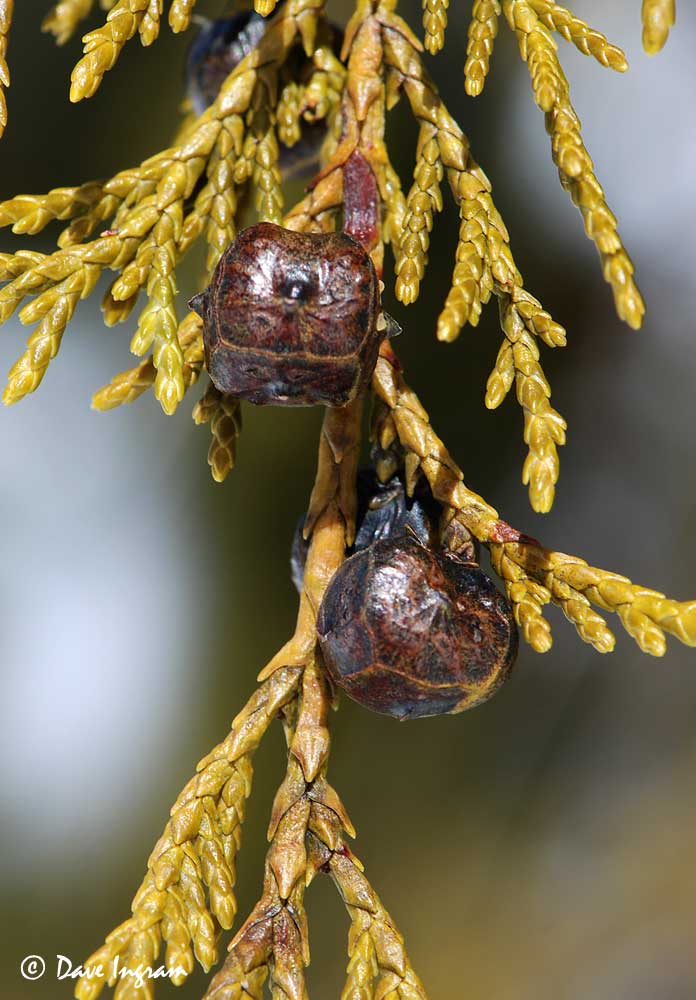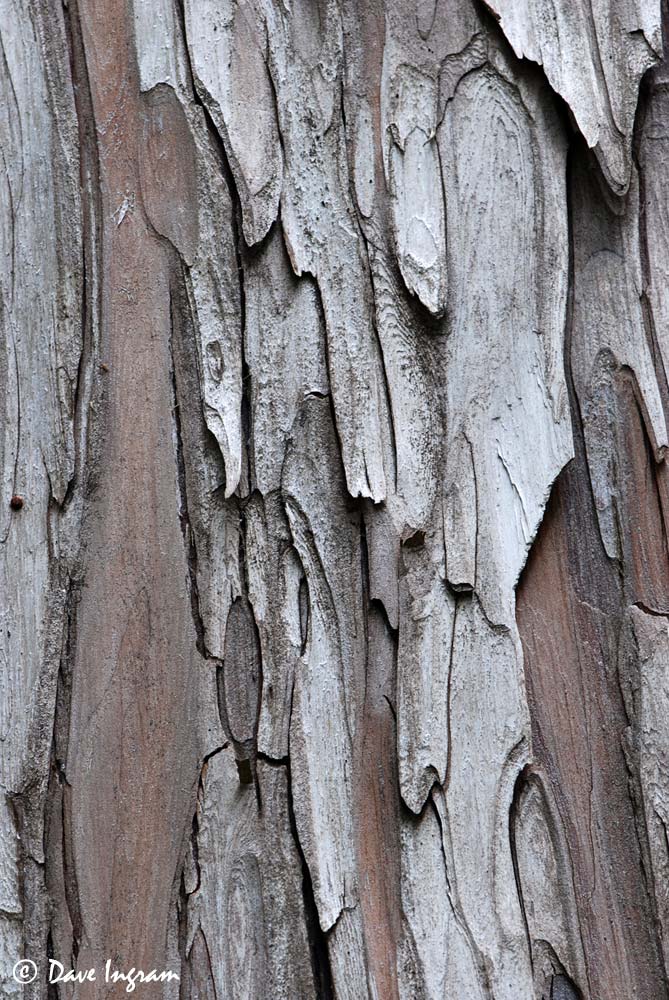Guest Post by Jocie Brooks
On a sunny Saturday during the recent cold-snap I took a morning off to do some cross-country skiing at Mt. Washington, gateway to Strathcona Provincial Park. The smooth, creamy-white snow glistened in the morning light, studded with troops of frosted trees. They call this “Paradise Meadows” for a reason; it’s a spectacular place and feels worlds away from life in the lowlands.
Though only a short drive from the Comox Valley, the difference in elevation makes for a major change in ecology. Many of the animals, plants and birds in the mountains are different from what we find closer to sea level. Winter is a great time to study the beautiful mountain trees like mountain hemlock, amabalis fir, sub-alpine fir and yellow-cedar.

Yellow-cedar (Chamaecyparis nootkatensis) is common along the trails. Look for a tree trunk with silvery strips of bark and branches that hang straight down like curtains. It’s a distinctive tree and one of the most long-lived in our area, some living as long as 1600 years.
Yellow-cedar (Chamaecyparis nootkatensis) is also known as yellow-cypress and Alaska cedar. It is primarily a tree of middle to high elevations, but on the west coast of Vancouver Island and along the north coast, it is often found at sea level. Yellow-cedar ranges from south Alaska to northern California. In BC, it is mostly coastal but also occurs in an isolated pocket near Slocan lake in the west Kootenay region. It frequents places that are quite wet, and at lower elevations is often associated with bogs.
Yellow-cedars are typically 20-40 metres tall but can grow up to 50 metres. The trunk is slightly twisted and in older trees is often buttressed at the base. The bark of young trees is smooth and reddish, but when the tree matures it becomes silvery gray and may slough off in ribbon-like shreds. The bark is more brittle than western redcedar, which can be torn off in long strips.

The tip of the tree droops, a fact it shares with western redcedar and western hemlock (both lower elevation trees). Long, flattened branches hang vertically, looking rather limp. Tiny scale-like leaves (get out your magnifying glass) are arranged opposite each other in four, somewhat overlapping, rows. Like western redcedar, the neat rows of leaves along the stem look a bit like a braid. Each leaf is sharply pointed at the tip, so if you stroke a branch away from you it will feel quite prickly.
There are several differences between Yellow-cedar and Western Redcedar (Thuja plicata), a common tree of lower elevations. The leaves of redcedar are not pointed, and the branches feel smooth. Redcedar leaves are often more yellow-green, whereas yellow-cedar leaves are more dark green or bluish-green. According to the Plants of Coastal British Columbia by Pojar and MacKinnon, the crushed leaves of yellow-cedar have an “unpleasant, mildewy smell” (I haven’t yet tried this), unlike the pleasant smell of redcedar boughs.
The small, round cones of yellow-cedar are no bigger than a commercial blueberry. When they are new they are light-green with a tinge of purple and covered in a whitish waxy powder. Cones mature in the fall of the second year, becoming hard and brown and a bit bumpy. The cones have four to six scales, separated by visible fissure-lines. At the base of the scales, each of which has a prickly point, there are small winged seeds.
One of the most remarkable things about yellow-cedar is the aromatic yellow-hued wood. Fresh cut yellow cedar has a pungently pleasant smell. Some liken it to raw potatoes, but that’s far too mundane. It’s a fragrance of pure mountain wilderness that sticks in one’s memory. The wood is light but strong and narrow-grained. It is resistant to rot and is amazingly free of insects and disease, and is a popular choice for carving.
Yellow-cedar and redcedar were used extensively by First Nations peoples. Yellow-cedar bark was soaked and boiled, then pounded until soft. It was then woven into blankets and clothing and was preferred to red cedar due to its softness. Hats and capes made from yellow-cedar bark were water repellent. Shredded bark was used for bandages, washcloths and towels. The wood was carved into many things such as paddles, bows, chests and dishes, as well as masks and pendants for ceremonial dancing regalia. Cedars, both red and yellow, were of fundamental importance to coastal peoples.
Yellow cedar is just one of the beautiful subalpine trees. I don’t get up skiing too often these days, but when I do I always enjoy the mountain landscape, trees and fresh air as much as I do the exercise. It only takes a short time to drive up the mountain, but it is a different world with so many new things to learn about and appreciate.